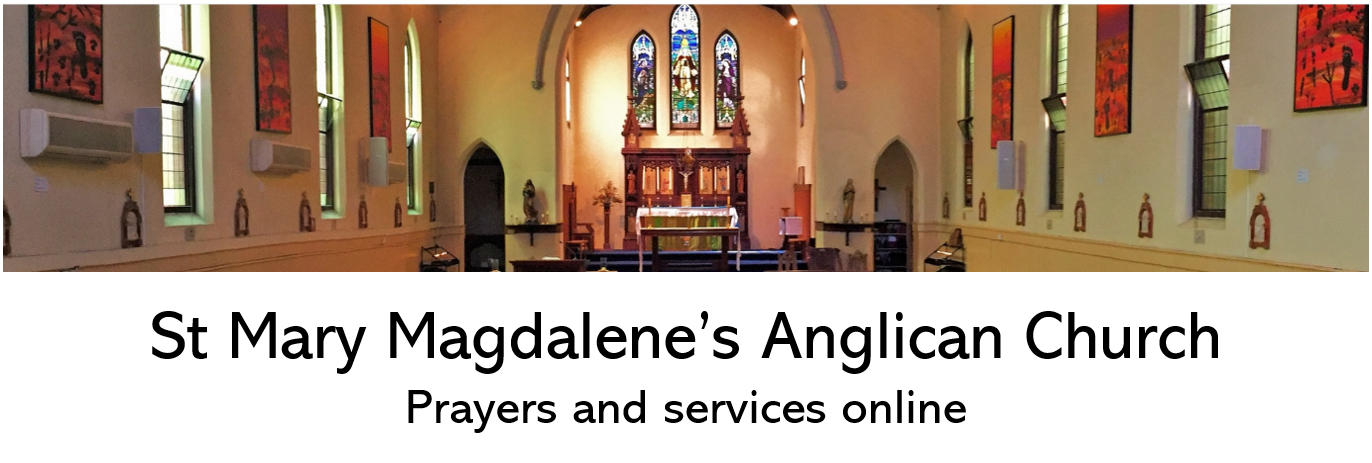The themes of Advent are hope, peace, joy, and love.
At St Mary Magdalene’s we are offering a contemporary reflection time on Wednesday mornings (Nov 30, Dec 7, 14, 21). We will start at 8.00 am and spend about half an hour together, sharing in a short introductory reflection, time for silence and a chant to conclude. You are welcome to join us in the church or to use the resources on this page to participate in spirit.
The reflection on love has been prepared by Leonie.
In his book Faith After Doubt, Brian McLaren describes four stages of the faith journey—Simplicity, Complexity, Perplexity, and Harmony—through which we move repeatedly over the course of our lives. As we grow in faith, our specific beliefs become less important than the revolutionary love to which we are called:

I have all kinds of mixed feelings about slogans. They often oversimplify and therefore mislead. But they’re pithy and memorable and therefore have some value. So, acknowledging my mixed feelings, I’d like to offer this pair of slogans to summarize the heart of our message so far:
Faith before doubt: it’s about correct beliefs.
Faith after doubt: it’s about revolutionary love.
In other words, the journey of faith through Simplicity and Complexity involves learning and perfecting beliefs. The journey of doubt through Perplexity involves questioning not only specific beliefs but the whole belief system approach to faith. Then, the journey into Harmony is a journey beyond beliefs into revolutionary love.
By revolutionary love, I mean love beyond: love that goes beyond myself to my neighbour, beyond my neighbour to the stranger, alien, other, outcast, and outsider; beyond the outsider to the critic, antagonist, opponent, and enemy; and even beyond the human to my non-human fellow creatures. In short, revolutionary love means loving as God would love: infinitely, graciously, extravagantly. To put it in more mystical terms, it means loving with God, letting divine love fill me and flow through me, without discrimination or limit, as an expression of the heart of the lover, not the merit of the beloved…
Twilight, then darkness.
Night falls and candles glow.
Gently surrounding us a new birth of love.
Watching. Waiting.
Awakening a new birth of love.
Twilight, then darkness.
Night falls and candles glow.
Gently surrounding us a new birth of joy.
Watching. Waiting.
Awakening a new birth of joy.
Twilight, then darkness.
Night falls and candles glow.
Gently surrounding us a new birth of peace.
Watching. Waiting.
Awakening a new birth of peace.
Twilight, then darkness.
Night falls and candles glow.
Gently surrounding us a new birth of hope.
Watching. Waiting.
Awakening a new birth of hope.

Beardy is one of twenty Canadian artists commissioned by the Canadian Conference of Catholic Bishops in 1975 to convey the Christian message using whatever idiom they wished. Beardy chose to portray the Virgin Mary pregnant with the Word, the sun’s fire pouring into her and yet she is not consumed. He provided the following artist’s statement:
It is my personal belief that a messenger from the Great Spirit came to earth in the form of His image after Him through a virgin birth in unrecorded history. Through this man, knowledge was passed on to man from the Great Spirit. Many of the teachings of this man have been kept by word of mouth through the ages by the elders of all tribes.
We see the virgin mother-to-be holding on to an embryo connected to the sun symbol (the Great Spirit) [center] who has deemed it necessary to send his messenger to his people. The mother is also connected to Mother Earth, who is nursing her [see the breast shape below]. She too is connected by a lifeline to the sun symbol. Around her are all the orders of creatures who come to see the messenger. He is born to explain their existence, [to restore] harmony between humanity and the elements, physically, mentally, and spiritually.
On the other side of the sun symbol we see an elder in prayer, ritually offering a bowl filled with sacred things. You can see the sun symbol is resting on his hunched frame, bearing him down with doubts, fear, depression, and all the ills of his time, his back to the very miracle he is praying for. It will take time for all to fully comprehend this phenomenon which has come to pass.
The four semicircles represent the elements of the air: snow, rain, tornadoes, heat. The moon [the blue circle] is painted above the elder. We regard the moon as our Grandmother who keeps vigil over all creatures during the night.





1 Comment
Beautiful.